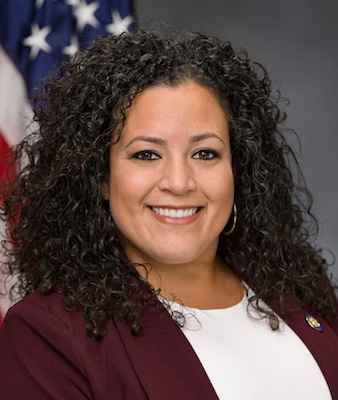S T A T E O F N E W Y O R K
________________________________________________________________________
4048
2025-2026 Regular Sessions
I N S E N A T E
January 31, 2025
___________
Introduced by Sens. RAMOS, BAILEY, BRISPORT, BROUK, CLEARE, COMRIE,
COONEY, FERNANDEZ, GIANARIS, GONZALEZ, GOUNARDES, HARCKHAM,
HOYLMAN-SIGAL, JACKSON, KAVANAGH, KRUEGER, LIU, MAY, MAYER, MYRIE,
PARKER, RIVERA, SALAZAR, SANDERS, SERRANO, STAVISKY, WEBB -- read
twice and ordered printed, and when printed to be committed to the
Committee on Labor
AN ACT to amend the labor law, in relation to raising the minimum wage
annually by a percentage which is based on inflation and providing for
the enforcement of such minimum wage; and to repeal subdivision 6 of
section 652 of the labor law relating thereto
THE PEOPLE OF THE STATE OF NEW YORK, REPRESENTED IN SENATE AND ASSEM-
BLY, DO ENACT AS FOLLOWS:
Section 1. This act shall be known and may be cited as the "raise the
wage act".
§ 2. Legislative findings. As New Yorkers struggle with the rapidly
rising cost of living, their paychecks are not keeping up. The state
minimum wage has been flat at $15 in New York city since 2019. In the
New York city suburbs it is also stalled at $15 and under current law
will not increase further. And in the rest of the state, years after the
legislature last acted to raise the minimum wage it is still gradually
inching up to $15, but will not increase further until the legislature
acts.
At the same time, record inflation is causing the real value of the
minimum wage to plummet across the state as consumers struggle with the
rapidly rising cost of necessities. In New York city, its value has
already fallen more than 15%, and is projected to fall a further 15% by
2027, or even more if consumer price inflation does not moderate in 2023
and 2024 as expected. This steep decline in the minimum wage is revers-
ing the historic reductions in poverty and earnings inequality that the
state achieved with the $15 minimum wage. And even once inflation
EXPLANATION--Matter in ITALICS (underscored) is new; matter in brackets
[ ] is old law to be omitted.
LBD08510-01-5
S. 4048 2
returns to more typical levels, workers will continue to lose real wages
as long as our minimum wage remains stagnant.
While in 2016 New York led the nation as the first state to adopt a
$15 minimum wage, today it has fallen behind the many other cities and
states that are raising their minimum wages well beyond $15. About fifty
cities and counties and two states will have minimum wages above $15 an
hour as of January 2023, and a growing group will have minimum wages of
more than $17 or $18 an hour. The fact that Yakima, Washington, Fresno,
California, and Denver, Colorado will all have higher minimum wages than
New York shows how far pay has fallen in the state.
To fix this, first, the value of New York city's minimum wage needs to
be restored by "catching it up" to where it would have been if it had
been adjusted steadily each year since 2019 to keep pace with rising
prices and workforce productivity. That translates to raising the mini-
mum wage to $21.25 an hour by 2026.
Second, because the state minimum wage in New York city's suburbs,
including Nassau, Suffolk, and Westchester counties, is also stalled at
$15 and those regions have housing and living costs that are almost as
high as New York city, the minimum wage there should increase at the
same rate.
Third, the minimum wage in the remainder of the state should also
eventually catch up with the state-wide rate, but at a slower pace since
wages and costs are lower there.
Finally, once the minimum wage across the state catches up, it must be
automatically adjusted or "indexed" each year so that it doesn't fall
behind again. That is the approach that 18 states and Washington, D.C.
are already using to keep their minimum wages up to date. For adjusting
the minimum wage each year, the legislature should adopt the same formu-
la that the department of labor and the division of the budget used
successfully to increase New York's upstate minimum wage in 2022 and
2023. They have been adjusting the minimum wage so that it keeps up both
with rising prices and also with any increases in worker productivity.
This best practice ensures that underpaid workers' paychecks maintain
their purchasing power and, that when there are gains in worker produc-
tivity, that workers too share in those benefits. This approach has
resulted in steady, moderate increases in the upstate wage of 70 cents
in 2022, and $1.00 in 2023. It should be made permanent and expanded
state-wide.
Many of our lowest paid jobs across the state are publicly-funded
human services jobs, in fields such as home care, childcare, and mental
health care, where workers provide essential services on which we all
rely. But the eroded minimum wage is holding down pay for these vital
caregivers and making it impossible to fill these demanding jobs at the
same time that demand for services has exploded as the state's popu-
lation ages and the pandemic has stressed families and communities. To
address this critical worker shortage, we need to not just raise the
minimum wage significantly, but also to provide the state funding neces-
sary to finance those raises in the state and city-contracted programs
that employ these essential workers.
New York's experience phasing in the $15 minimum wage showed that
significant wage increases have been manageable for employers and that
higher paychecks have put money back into local communities, boosting
consumer spending at neighborhood businesses. Studies by the federal
reserve bank of New York of the impact in upstate counties, and by the
New York city-based new school both found that New York's last minimum
wage increase raised pay significantly without hurting employment - even
S. 4048 3
in counties along the New York-Pennsylvania border where the minimum
wage in our neighboring state is just $7.25.
With the value of New York's minimum wage plummeting and rising prices
squeezing New York's working families, we cannot afford to wait to
restore a strong minimum wage for all New Yorkers.
§ 3. Subdivision 1 of section 652 of the labor law, as amended by
section 1 of part K of chapter 54 of the laws of 2016, paragraph (c) as
amended by section 1 of part S of chapter 56 of the laws of 2023, is
amended to read as follows:
1. Statutory. Every employer shall pay to each of its employees for
each hour worked a wage of not less than:
$4.25 on and after April 1, 1991,
$5.15 on and after March 31, 2000,
$6.00 on and after January 1, 2005,
$6.75 on and after January 1, 2006,
$7.15 on and after January 1, 2007,
$8.00 on and after December 31, 2013,
$8.75 on and after December 31, 2014,
$9.00 on and after December 31, 2015, and until December 31, 2016, or,
if greater, such other wage as may be established by federal law pursu-
ant to 29 U.S.C. section 206 or its successors or such other wage as may
be established in accordance with the provisions of this article.
(a) New York City. [(i) Large employers.] Every employer [of eleven or
more employees] shall pay to each of its employees for each hour worked
in the city of New York a wage of not less than:
$11.00 per hour on and after December 31, 2016,
$13.00 per hour on and after December 31, 2017,
$15.00 per hour on and after December 31, 2018,
$17.25 ON AND AFTER JANUARY 1, 2026,
$19.25 ON AND AFTER JANUARY 1, 2027,
$21.25 ON AND AFTER JANUARY 1, 2028, or, if greater, such other wage
as may be established by federal law pursuant to 29 U.S.C. section 206
or its successors or such other wage as may be established in accordance
with the provisions of this article.
[(ii) Small employers. Every employer of ten or less employees shall
pay to each of its employees for each hour worked in the city of New
York a wage of not less than:
$10.50 per hour on and after December 31, 2016,
$12.00 per hour on and after December 31, 2017,
$13.50 per hour on and after December 31, 2018,
$15.00 per hour on and after December 31, 2019,
or, if greater, such other wage as may be established by federal law
pursuant to 29 U.S.C. section 206 or its successors or such other wage
as may be established in accordance with the provisions of this arti-
cle.]
(b) Remainder of downstate. Every employer shall pay to each of its
employees for each hour worked in the counties of Nassau, Suffolk and
Westchester a wage not less than:
$10.00 per hour on and after December 31, 2016,
$11.00 per hour on and after December 31, 2017,
$12.00 per hour on and after December 31, 2018,
$13.00 per hour on and after December 31, 2019,
$14.00 per hour on and after December 31, 2020,
$15.00 per hour on and after December 31, 2021,
$17.25 ON AND AFTER JANUARY 1, 2026,
$19.25 ON AND AFTER JANUARY 1, 2027,
S. 4048 4
$21.25 ON AND AFTER JANUARY 1, 2028,
or, if greater, such other wage as may be established by federal law
pursuant to 29 U.S.C. section 206 or its successors or such other wage
as may be established in accordance with the provisions of this article.
(c) Remainder of state. Every employer shall pay to each of its
employees for each hour worked outside of the city of New York and the
counties of Nassau, Suffolk, and Westchester, a wage of not less than:
$9.70 on and after December 31, 2016,
$10.40 on and after December 31, 2017,
$11.10 on and after December 31, 2018,
$11.80 on and after December 31, 2019,
$12.50 on and after December 31, 2020,
[and on each following December thirty-first up to and until December
31, 2022, a wage published by the commissioner on or before October
first, based on the then current minimum wage increased by a percentage
determined by the director of the budget in consultation with the
commissioner, with the result rounded to the nearest five cents, total-
ing no more than fifteen dollars, where the percentage increase shall be
based on indices including, but not limited to, (i) the rate of
inflation for the most recent twelve month period ending June of that
year based on the consumer price index for all urban consumers on a
national and seasonally unadjusted basis (CPI-U), or a successor index
as calculated by the United States department of labor, (ii) the rate of
state personal income growth for the prior calendar year, or a successor
index, published by the bureau of economic analysis of the United States
department of commerce, or (iii) wage growth;]
$13.20 ON AND AFTER DECEMBER 31, 2023,
$14.20 ON AND AFTER JANUARY 1, 2025,
$16.00 ON AND AFTER JANUARY 1, 2026,
$18.00 ON AND AFTER JANUARY 1, 2027,
$20.00 ON AND AFTER JANUARY 1, 2028,
or, if greater, such other wage as may be established by federal law
pursuant to 29 U.S.C. section 206 or its successors or such other wage
as may be established in accordance with the provisions of this article.
(d) ANNUAL INCREASES. ON JANUARY FIRST, TWO THOUSAND TWENTY-NINE, AND
ON EACH FOLLOWING JANUARY FIRST, THE WAGES SET FORTH IN PARAGRAPHS (A),
(B) AND (C) OF THIS SUBDIVISION AND ANY OTHER WAGES ESTABLISHED IN
ACCORDANCE WITH THE PROVISIONS OF THIS CHAPTER AND SET FORTH IN ANY
MINIMUM WAGE ORDER, SHALL BE THE WAGES PUBLISHED BY THE COMMISSIONER
PURSUANT TO THIS PARAGRAPH. THE COMMISSIONER SHALL PUBLISH SUCH WAGES ON
OR BEFORE OCTOBER FIRST, TWO THOUSAND TWENTY-EIGHT, AND ON EACH FOLLOW-
ING OCTOBER FIRST. THE COMMISSIONER SHALL BASE EACH SUCH PUBLISHED WAGE
ON EACH THEN CURRENT WAGE INCREASED BY THE SUM OF: (I) THE RATE OF
INFLATION, IF GREATER THAN ZERO, AS MEASURED BY THE CHANGE IN THE AVER-
AGE FOR THE TWELVE MONTHS THROUGH JUNE OF THE CURRENT YEAR DIVIDED BY
THE AVERAGE FOR THE TWELVE MONTHS THROUGH JUNE OF THE PRECEDING YEAR IN
THE CONSUMER PRICE INDEX FOR ALL URBAN WAGE EARNERS AND CLERICAL WORKERS
ON A NATIONAL AND SEASONALLY UNADJUSTED BASIS (CPI-W), OR A SUCCESSOR
INDEX, AS CALCULATED BY THE UNITED STATES DEPARTMENT OF LABOR; AND (II)
LABOR PRODUCTIVITY GROWTH, IF GREATER THAN ZERO, AS MEASURED BY THE
CHANGE IN THE AVERAGE QUARTERLY INDEX FOR THE FOUR QUARTERS THROUGH THE
SECOND QUARTER OF THE CURRENT YEAR DIVIDED BY THE AVERAGE QUARTERLY
INDEX FOR THE FOUR QUARTERS THROUGH THE SECOND QUARTER OF THE PRECEDING
YEAR IN NATIONAL LABOR PRODUCTIVITY (OUTPUT PER HOUR) OF ALL EMPLOYED
PERSONS IN THE NONFARM BUSINESS SECTOR, OR A SUCCESSOR INDEX, AS CALCU-
LATED BY THE UNITED STATES DEPARTMENT OF LABOR, WITH THE SUM ROUNDED TO
S. 4048 5
THE NEAREST MULTIPLE OF FIVE CENTS. THE COMMISSIONER SHALL PUBLISH SUCH
WAGES ON OR BEFORE OCTOBER FIRST, TWO THOUSAND TWENTY-EIGHT, AND ON OR
BEFORE EACH FOLLOWING OCTOBER FIRST. PROVIDED, HOWEVER, THAT THE WAGE
SET FORTH FOR PARAGRAPH (C) OF THIS SUBDIVISION THAT THE COMMISSIONER
PUBLISHES ON OR BEFORE OCTOBER FIRST, TWO THOUSAND TWENTY-EIGHT TO TAKE
EFFECT ON JANUARY FIRST, TWO THOUSAND TWENTY-NINE SHALL BE A WAGE THAT
IS EQUAL TO THE WAGE THAT THE COMMISSIONER PUBLISHES TO TAKE EFFECT ON
JANUARY FIRST, TWO THOUSAND TWENTY-NINE FOR PARAGRAPHS (A) AND (B) OF
THIS SUBDIVISION. THEREAFTER, BEGINNING WITH THE WAGE THAT THE COMMIS-
SIONER PUBLISHES FOR PARAGRAPH (C) OF THIS SUBDIVISION ON OR BEFORE
OCTOBER FIRST, TWO THOUSAND TWENTY-NINE TO TAKE EFFECT ON JANUARY FIRST,
TWO THOUSAND THIRTY, AND THAT THE COMMISSIONER PUBLISHES ON OR BEFORE
EACH FOLLOWING OCTOBER FIRST TO TAKE EFFECT ON EACH FOLLOWING JANUARY
FIRST, THE COMMISSIONER SHALL ADJUST THE CURRENT WAGE FOR PARAGRAPH (C)
OF THIS SUBDIVISION USING THE FORMULA SPECIFIED ABOVE IN THIS PARAGRAPH.
FOR PURPOSES OF SUBDIVISION TWO OF THIS SECTION, EACH PUBLISHED WAGE
THAT INCREASES EACH THEN CURRENT MINIMUM WAGE SHALL BE DEEMED TO BE AN
INCREASE IN HOURLY MINIMUM WAGE AS PROVIDED IN THIS SUBDIVISION.
(E) The rates and schedules established [in paragraphs (a) and (b) of]
UNDER this subdivision FOR NEW YORK CITY AND FOR NASSAU, SUFFOLK, AND
WESTCHESTER COUNTIES shall not be deemed to be the minimum wage under
this subdivision for purposes of the calculations specified in subdivi-
sions one and two of section five hundred twenty-seven of this chapter.
§ 4. Subdivision 6 of section 652 of the labor law is REPEALED.
§ 5. Section 665 of the labor law is renumbered section 669 and a new
section 665 is added to read as follows:
§ 665. LOCAL WAGE ENFORCEMENT AUTHORITY. A CITY WITH A POPULATION OF
ONE MILLION OR MORE, ACTING THROUGH ITS COMPTROLLER, MAY ENFORCE AND
INVESTIGATE VIOLATIONS OF THE STATE MINIMUM WAGE, OTHER STATE WAGE
REQUIREMENTS ESTABLISHED PURSUANT TO THIS ARTICLE, AND ANY OTHER LOCAL
LAW, ORDINANCE, OR REGULATION REQUIRING PAYMENT OF A MINIMUM WAGE OR
COMPENSATION, OR ESTABLISHING A LABOR STANDARD FOR WORK PERFORMED WITHIN
THE CITY'S GEOGRAPHIC BOUNDARIES. THE COMPTROLLER SHALL BE EMPOWERED TO
ADOPT FURTHER ENFORCEMENT PROVISIONS, REMEDIES, PENALTIES, AND OTHER
IMPLEMENTING REGULATIONS. PROVIDED, HOWEVER, THE COMMISSIONER OF CONSUM-
ER AND WORKER PROTECTION OF SUCH A CITY OR ANY SUCCESSOR TO SUCH OFFICE
MAY ALSO ENFORCE AND INVESTIGATE VIOLATIONS OF THE STATE MINIMUM WAGE
AND OTHER STATE WAGE REQUIREMENTS ESTABLISHED PURSUANT TO THIS ARTICLE
IN THE COURSE OF ENFORCING OTHER LAWS THAT SUCH COMMISSIONER IS CHARGED
WITH ENFORCING AND MAY ORDER ANY AUTHORIZED REMEDIES OR PENALTIES.
PROVIDED, FURTHER, NOTHING IN THIS SECTION SHALL LIMIT THE AUTHORITY OF
THE DEPARTMENT OF LABOR OR ANY OTHER GOVERNMENT AGENCY TO ENFORCE THE
STATE MINIMUM WAGE AND OTHER STATE WAGE REQUIREMENTS ESTABLISHED PURSU-
ANT TO THIS ARTICLE OR ANY OTHER LAW WITHIN THE GEOGRAPHIC BOUNDARIES OF
A CITY WITH A POPULATION OF ONE MILLION OR MORE OR ELSEWHERE.
§ 6. This act shall take effect immediately.


























